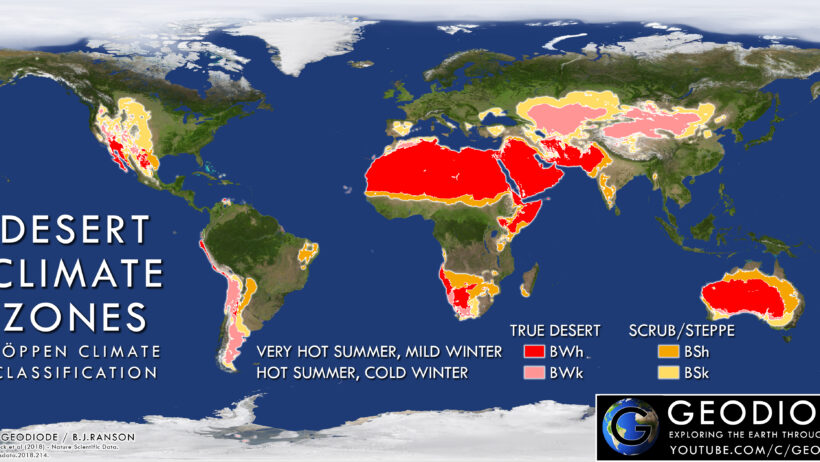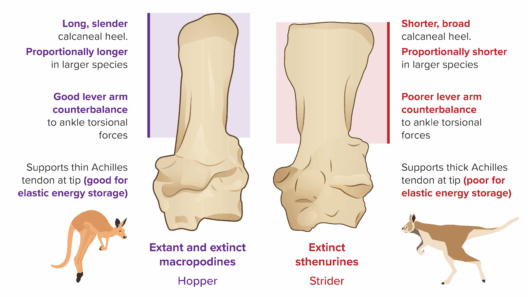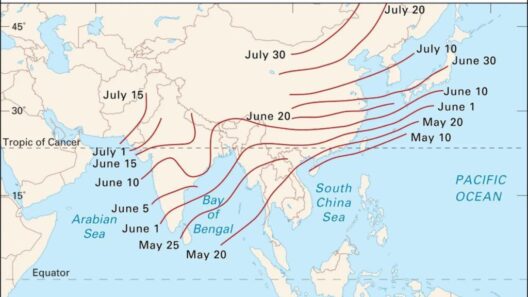What if I told you that deserts are not just barren wastelands devoid of life? This might seem counterintuitive to popular belief, yet the climate of the desert is a complex tapestry of diverse ecological niches and astonishing adaptations. It’s time to delve deeper into the enigmatic climates that characterize deserts and understand why they are often more diverse than we might initially assume.
The first step in examining this diversity lies in understanding what constitutes a desert climate. Traditionally, deserts are classified by their arid conditions, characterized by mean annual rainfall that typically falls below 250 millimeters (approximately 10 inches). Despite these relatively low precipitation levels, deserts can boast a surprising variety of ecological adaptations and life forms, which thrive in conditions that many would find inhospitable.
There are primarily two types of deserts based on their climatic classifications: hot deserts and cold deserts. Hot deserts, such as the Sahara and the Sonoran, are marked by intense heat and scarce rainfall. The average temperature during the day can soar dangerously high, sometimes exceeding 50°C (122°F). Cold deserts, on the other hand, like the Great Basin in North America, experience cold winters with snow and significantly lower temperatures during nighttime, giving them a very different ecological structure than their hotter counterparts.
However, the stereotype of the desert as a barren wasteland is an oversimplification. Contrary to this notion, deserts are home to a plethora of specialized species, each uniquely adapted to thrive in extreme climates. For instance, consider the yucca plant or the saguaro cactus. These flora have developed remarkable physiological traits, such as water storage capabilities and heat-resistant epidermal layers, which allow them to conserve precious water and endure the intense solar radiation.
Moreover, deserts are not devoid of fauna. Interestingly, many animals have evolved incredible adaptations to survive and thrive in this arid environment. Take, for instance, the kangaroo rat, a small rodent that can survive without ever drinking water. Instead, it metabolizes moisture from its food. The persistent struggles with water scarcity have shaped their behavioral patterns, leading them to be nocturnal, foraging at night when temperatures are cooler and humidity levels slightly higher.
This intricate web of life reflects the undeniable fact that diversification in desert ecosystems is underpinned by necessity. Each organism plays a pivotal role in the broader ecological framework. For example, desert plants not only provide shelter and sustenance for various insect species; they also help to stabilize the soil and prevent erosion, showing that the absence of moisture does not equate to ecological desolation.
Furthermore, one cannot overlook the interplay between geography and climate in influencing desert diversity. Some deserts lie in rain shadows—regions that receive scant rainfall due to mountain ranges blocking moist air currents. Others, however, are shaped by their proximity to the equator or oceanic currents, which can create unique microclimates within vast desert landscapes. For example, the coastal Atacama Desert in Chile experiences a semi-arid climate due to the cold Humboldt Current, contrasting sharply with hotter inland deserts. This diversification can result in exceptionally high levels of endemism, where specific species exist nowhere else on the planet.
Now, one might ponder the future of these remarkable ecosystems in the face of climate change. As global temperatures rise, the dynamics of desert climates may shift, fostering conditions that could further strain fragile water resources. Additionally, prolonged periods of drought could fundamentally alter the existing flora and fauna, threatening the delicate balance that has evolved over millennia. The effects of climate change are already becoming evident, with certain species standing on the precipice of extinction due to habitat loss and shifting climatic zones.
In light of this, one must confront a daunting challenge: how can we preserve and protect these extraordinary ecosystems? Conservation efforts must prioritize not only the protection of species but also the preservation of entire ecosystems. Initiatives should aim to foster a deeper understanding of desert ecosystems among the general populace, elucidating the fact that deserts possess intricate and thriving life forms that contribute to our planet’s biodiversity.
The argument for protecting desert environments transcends the mere appreciation of their beauty. Healthy desert ecosystems contribute to global biodiversity, provide critical habitats for migrating species, and even play a role in carbon storage, potentially mitigating climate change effects. It is a profound reminder that every ecosystem, no matter how harsh, bears intrinsic value and necessitates stewardship.
As we venture further into the complexities of global climate change, it is crucial to maintain an awareness of the intricate life that inhabits desert ecosystems. This understanding allows for a more nuanced perception of deserts—they are not merely barren lands but vibrant environments teeming with life, adaptation, and resilience. Addressing the misconceptions surrounding desert climates is essential, for it arms individuals with the knowledge and motivation to fight for their preservation.
In conclusion, the climate of the desert is multifaceted, rich in diversity, and worthy of exploration and protection. By challenging preconceived notions and delving into the astonishing variety of life that these ecosystems support, we can foster a deeper connection and commitment to conserving these remarkable natural landscapes for future generations. What hidden wonders await discovery in the world’s deserts? The adventure of exploration is only beginning.








